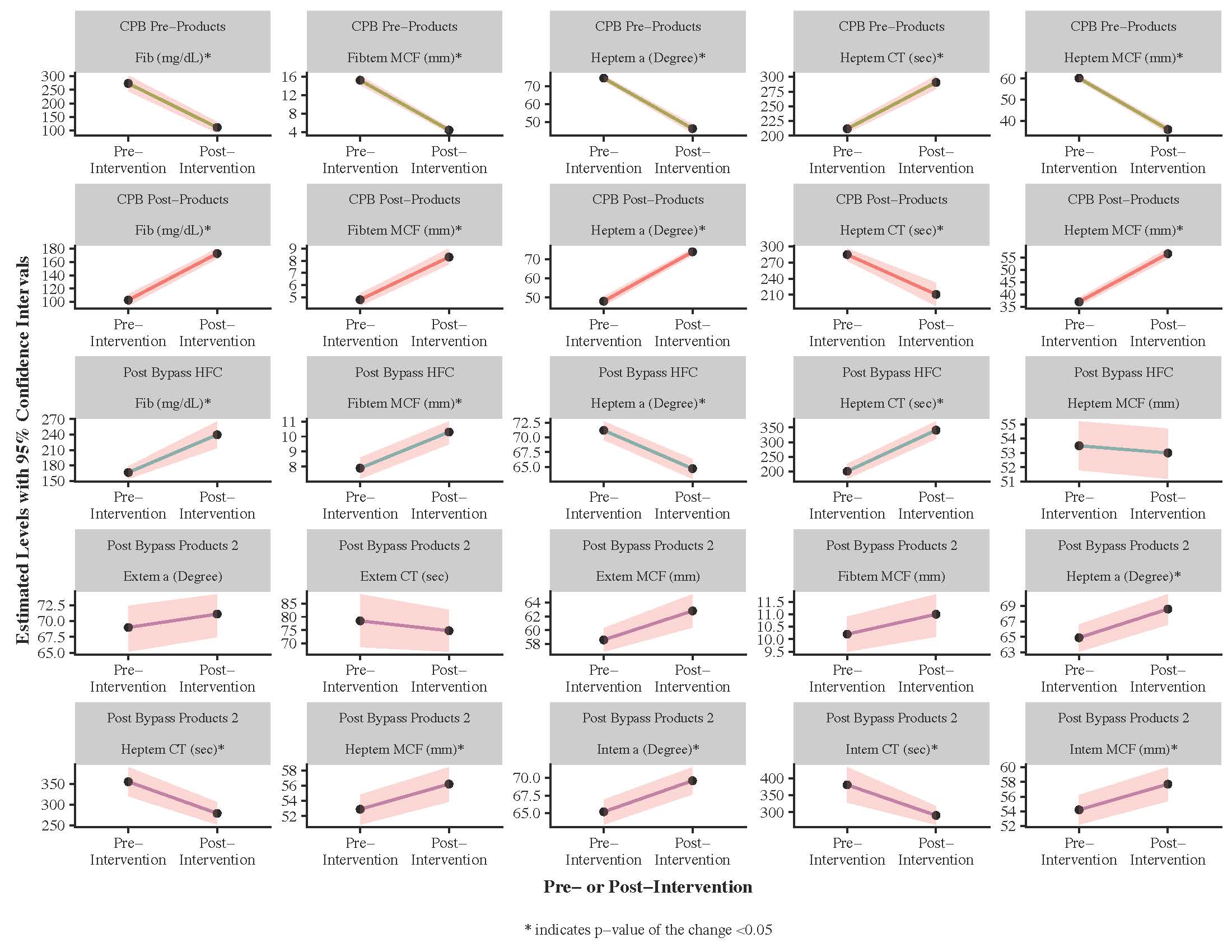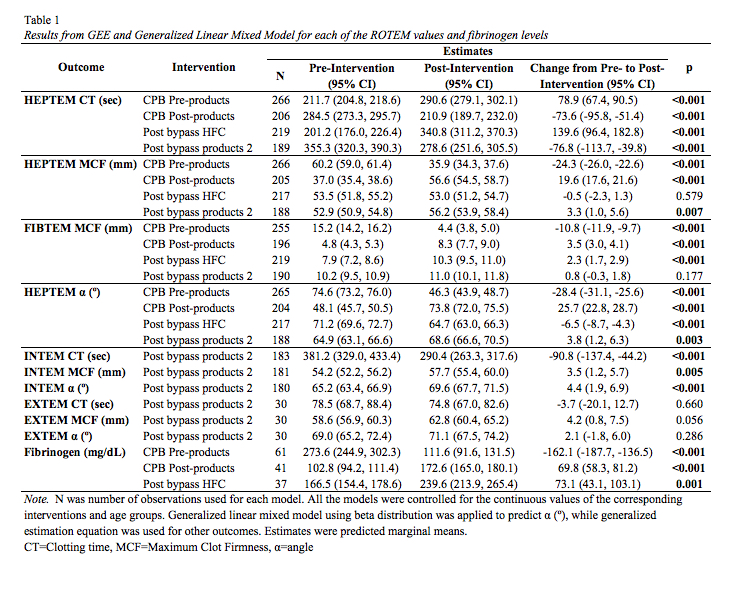NM-379
Interval Changes in ROTEM values during Cardiopulmonary bypass
Tirotta C, Lagueruela R, Madril D, Salyakina D, Wang W, Taylor T, Ojito J, Lim H, Hannan R, Burke R
Nicklaus Children's Hospital, Miami, FL, USA
Introduction: The ROTEM (Tem International GmbH, Munich, Germany) is an enhanced modification of thromboelastography (TEG) (Haemonetics Corp., Braintree, MA), first described in 1948 . Use of the ROTEM has been shown to reduce the need and amount of transfused blood products in pediatric cardiac surgery patients . Tirotta et al. demonstrated that administering human fibrinogen concentrate (HFC) at a dose of 70 mg/kg to neonates and infants undergoing cardiac surgery reduced the need for fresh frozen plasma (FFP) and cryoprecipitate .
The purpose of this study is to quantify the changes that occur to the ROTEM values with cardiopulmonary bypass (CPB), and with distinct transfusion interventions during the course of the operation.
Methods:
After receiving IRB exempt status from the Research Institute of Nicklaus Children’s Hospital, we retrospectively reviewed 171 pediatric patients undergoing cardiac surgery requiring CPB. All the cases were done by the same anesthesiologist and surgeon. ROTEM assays were done at baseline prior to the start of surgery, on CPB prior to the administration of plateletpheresis, on CPB after plateletpheresis (25 cc/kg), off CPB immediately after the administration human fibrinogen concentrate (HFC) (55 mg/kg); there were also ROTEMs done in the post CPB period after the administration of further component therapy, if needed after the HFC administration. Through regression analysis we adjusted for the variation in blood products received by different patients.
Results:
Results from GEE and Beta regression models suggested significant changes in HEPTEM CT after all four interventions, HEPTEM MCF after three out of the four interventions, FIBTEM MCF after three out of the four interventions, and in HEPTEM α after all four interventions, adjusting for age groups and continuous values of the actual interventions (Table 1, Figure 1).
Discussion
CPB induced profound pertubations in ROTEM values. The administration of plateletpheresis (25 cc/kg) while on CPB improved the HEPTEM ï¡ from 48 to 73 and the FIBTEM MCF from 4.8 mm to 8.3 mm; plasma fibrinogen levels increased from 105 mg/dL to 175 mg/dL. The administration of HFC (55 mg/kg) after termination of CPB improved the FIBTEM MCF from 7.9 mm to 10.3 mm and the plasma fibrinogen level from 175 mg/dL to 240 mg/dL.
Conclusion
CPB induced profound pertubations in ROTEM values. Administration of plateletpheresis and then HFC significantly improved these values by quantifiable amounts.
Top













